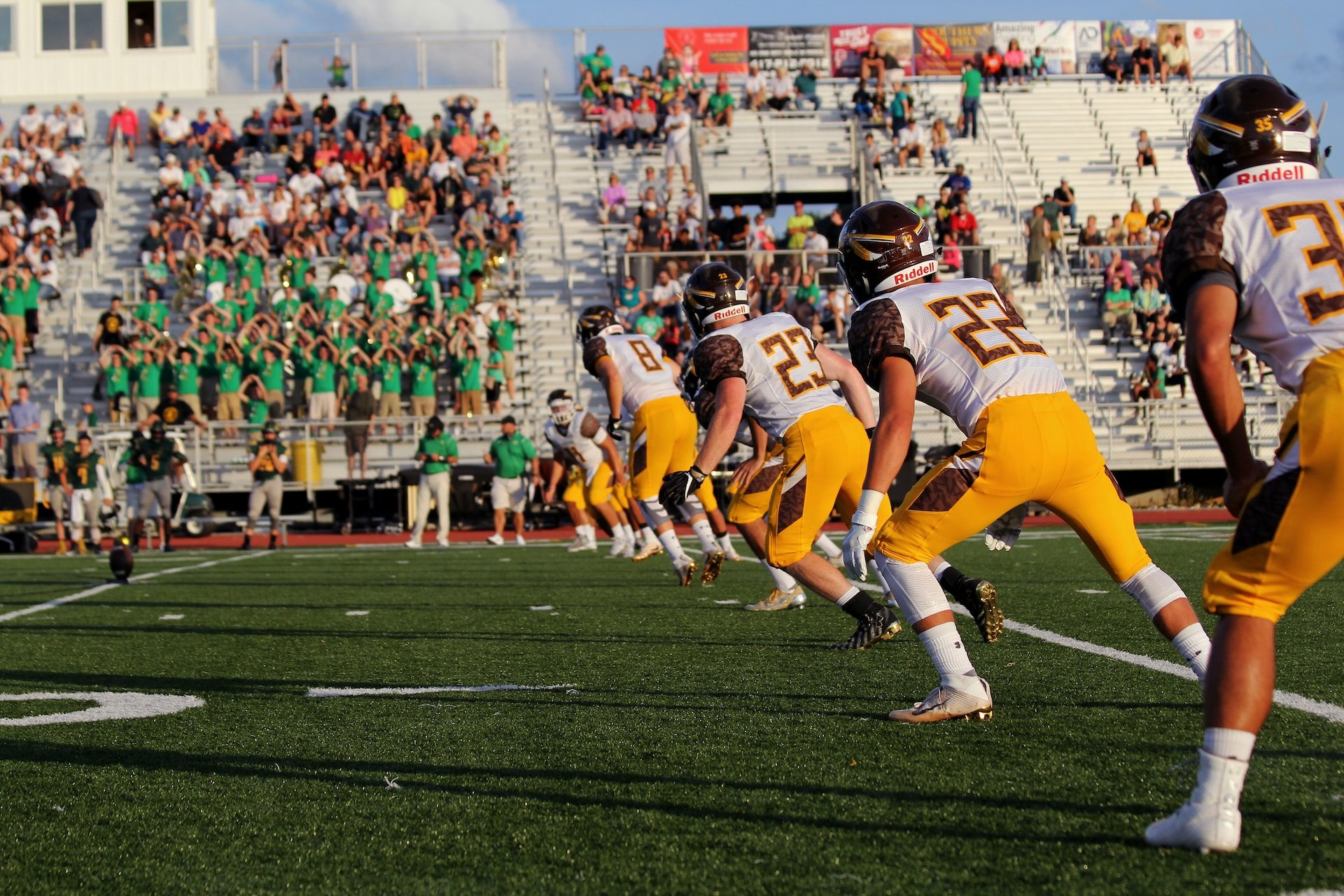When you’re searching for colleges, you may see the terms D1 vs D2 vs D3. If you’re planning on participating in athletics during your college years, you may already know what this means. However, if you tend to stay off the field, the terms may not be as familiar to you.
In short, D1, D2, and D3 reference the athletic programs and the funding the school has for the program. The main difference between D1 and D3 schools is that D1 schools can offer athletic scholarships and D3 schools can’t.

Below, we break down exactly where these terms come from and what they can mean for your education.
What Does D1, D2, and D3 Mean?
The National Collegiate Athletic Association (NCAA) is a nonprofit organization that oversees 24 college sports for both men and women. Every school gets a label: Division 1 (D1), Division 2 (D2), and Division 3 (D3).
The different divisions are related to the college or university’s size and the resources available in the athletic program. This is so a school that is a Division 1 college with significant financial resources for its athletic program isn’t facing up against Division 3 schools, giving programs unfair advantages.
What’s The Difference Between D1 and D3 Schools?
If you’re not interested in sports, your initial reaction may be, “The difference between D1 and D3 doesn’t matter to me.” However, these schools tend to differ outside the field, too. Here are some things you can expect in the three different divisions:

NCAA Division I: What to expect
D1 schools are known to have the best of the best when it comes to college athletes. These colleges and universities have large athletic budgets, support extensive sports facilities, and offer full athletic scholarships. They also tend to have larger campuses and student bodies.
The most well-known conferences are all part of D1, compete at the national level, and include schools like Harvard University, Boston College, Yale University, Duke University, and the University of Virginia. There are 350 schools currently that are named to Division 1. D1 is the most highly funded, highly covered, and most competitive of the three divisions.
Top 5 Most Profitable D1 Athletic Programs:
- The University of Texas at Austin (Football Program)
- University of Georgia (Football Program)
- University of Michigan-Ann Arbor (Football Program)
- University of Oklahoma-Norman Campus (Football Program)
- University of Notre Dame(Football Program)
NCAA Division II: What to Expect
D2 colleges and universities on the other hand compete at the regional level. They still have extensive athletic programs but do tend to have smaller campuses and fewer students attending than D1 schools. Student athletes can receive partial scholarships with some receiving full rides. There are only around 300 colleges and universities that are considered Division 2.
NCAA Division III: What to expect
The major difference between a D1 and a D3 school is the fact that Division 3 colleges are not able to give out athletic scholarships. While student-athletes can absolutely qualify for other awards through the school’s endowment program, there are none dedicated to the fact that they play sports. Just under 450 schools are considered D3.
These colleges still have great athletic programs and facilities, but their budget is less compared to D2 and D3 schools. Class sizes tend to be smaller as well.
- Massachusetts Institute of Technology
- California Institute of Technology
- University of Chicago
- Williams College
- Amherst College
Which Division Should You Attend?
If you’re not planning on participating in sports while you’re at college, choosing between a D1 vs D2 or D3 college will mean very little to you. The size of the college and class is likely already a consideration for you – without taking sports into account.
However, these factors could mean something to you if you’re on the fence between two colleges. If you love attending games or want to take advantage of extensive gym facilities during your time there, those could be deciding factors.
But for student-athletes, the question may not be as easily answered. You’ll have to weigh your financial aid offers as well as your goals both off and on the field. Knowing what to expect if you accept a spot on the team can give you insight. For example, accepting an athletic scholarship at a D1 school can mean year-round practices and summer school to catch up on courses. At a D3 college, the program may be more laid back and give you more time for your studies.
When it comes to higher education, D1 vs D3 will not matter much for most students. However, knowing the difference between the two can give you a little more insight into what you can expect during your four years at the school – whether you participate in athletics or not. For the athletes among us, though, the difference may mean a bit more to their career and education goals.
Are you thinking about attending a D1, D2, or D3 college? College Match on College Raptor can help you find the best schools for your goals in the classroom and in sports. Get started for free right here.





